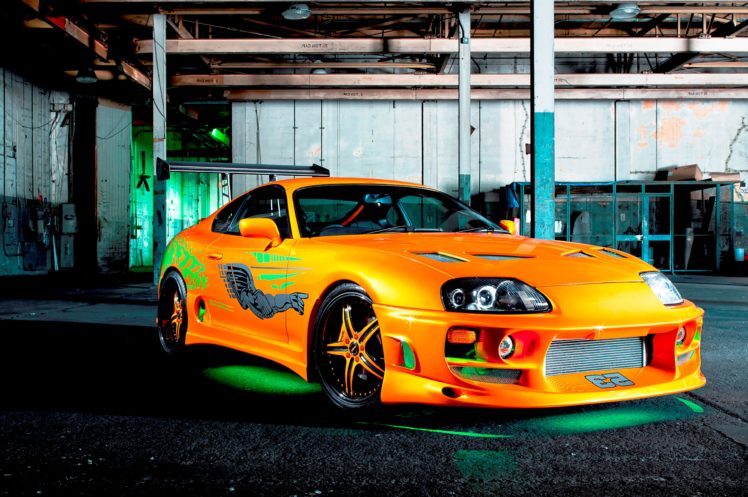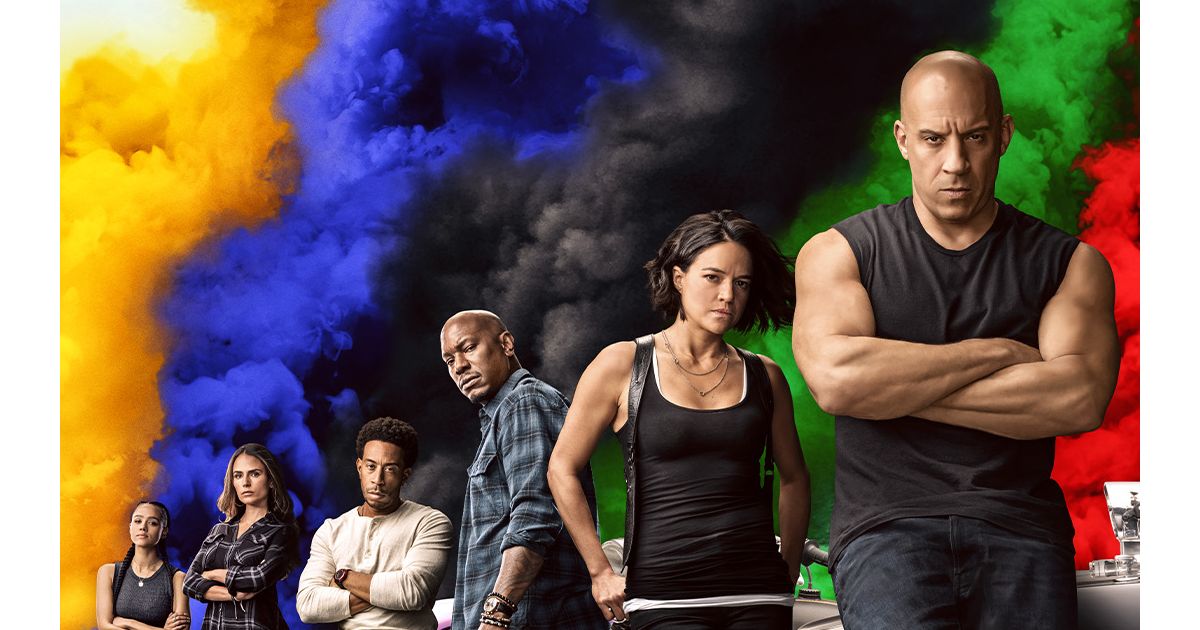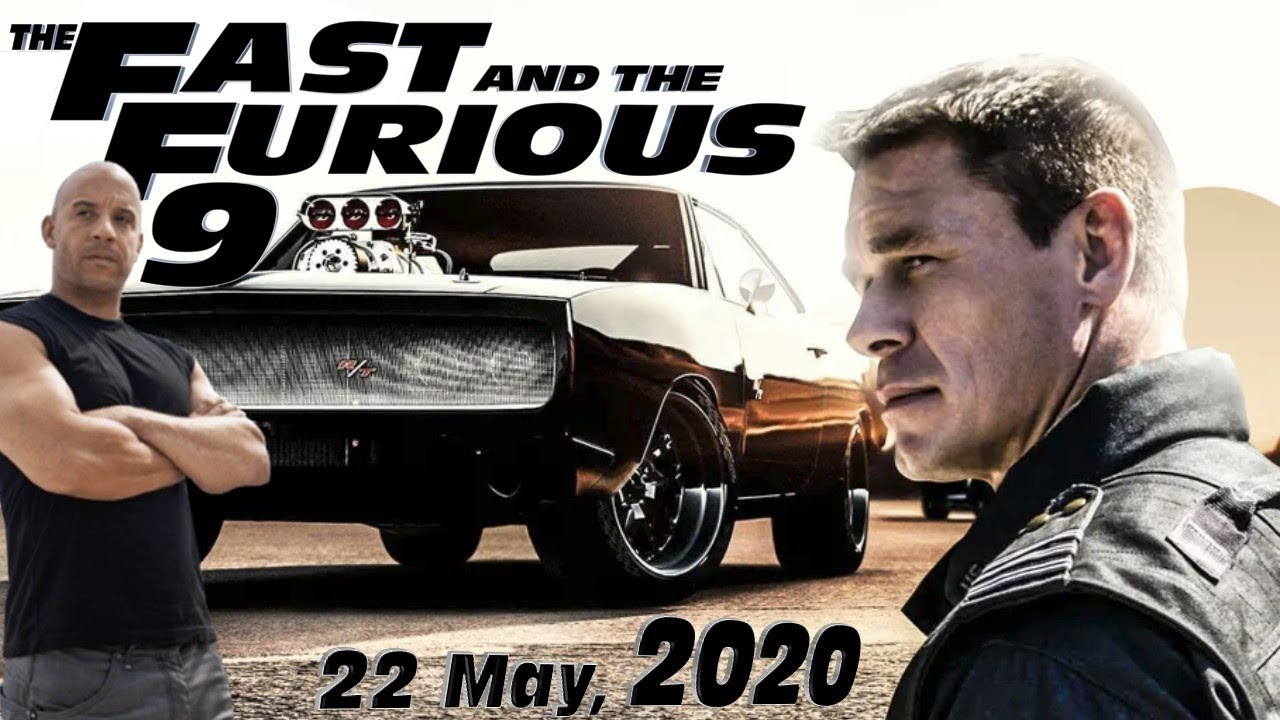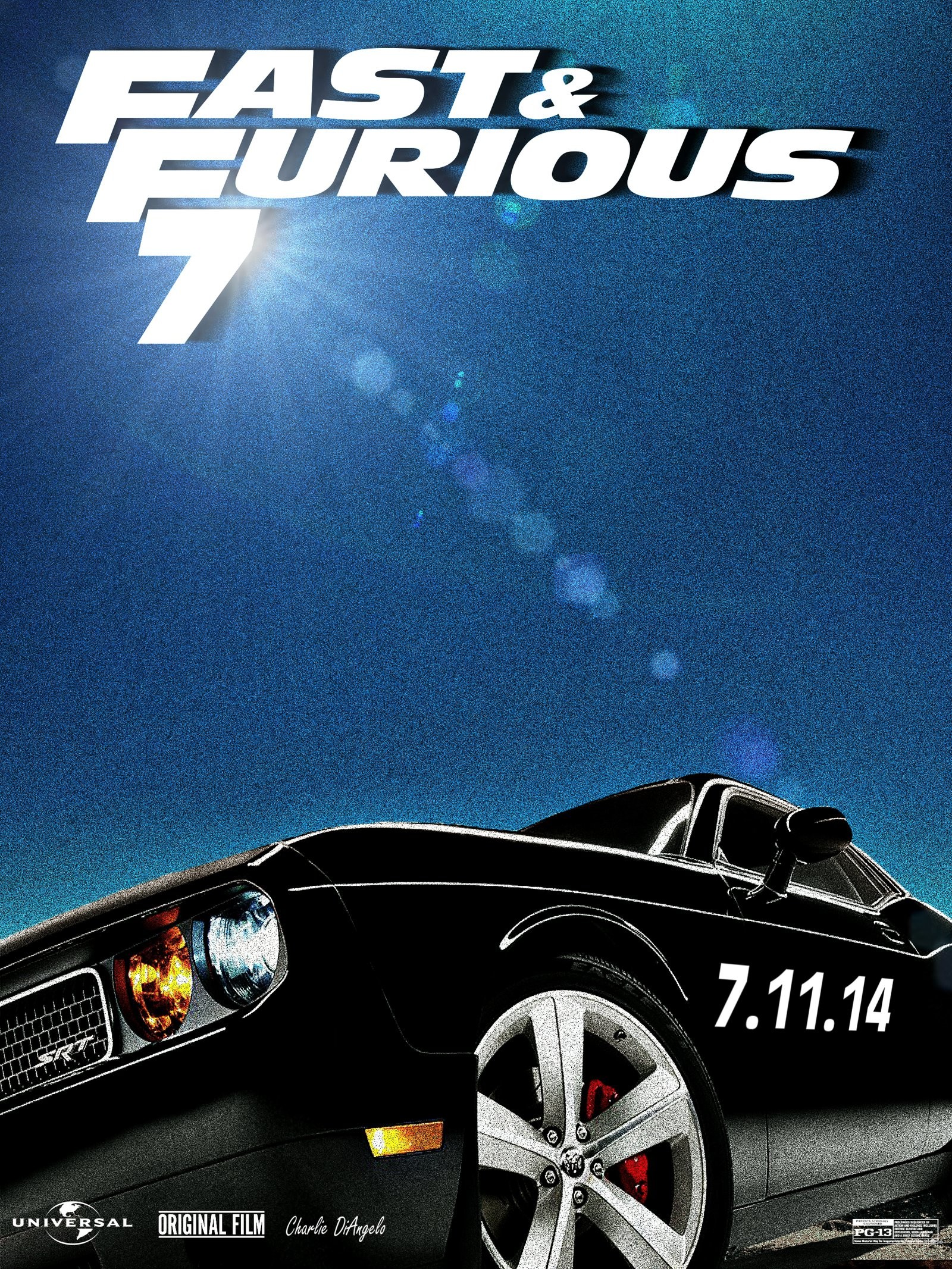While developing the film, Universal completely departed from any street racing elements prevalent in previous films, to transform the franchise into a heist action series involving cars. By doing so, they hoped to attract wider audiences that might otherwise be put off by a heavy emphasis on cars and car culture. Fast Five is considered the transitional film in the series, featuring only one car race and giving more attention to action set pieces such as gun fights, brawls and the heist.
Fast Five was initially conceived to conclude the franchise, but following strong box office performance and high critical praise, Universal proceeded to develop a sixth installment. Furthermore, the film is noted for the addition of Dwayne Johnson to the cast, whose performance was critically praised. Away from the franchise, Diesel made a string of box office or critical flops, including The Chronicles of Riddick , The Pacifier and Find Me Guilty . After discussions with Universal, the pair shared an interest in reviving the series. After signing Diesel and confirming the return of Lin, Universal worked to track the first film's original co-stars and re-signed Walker, Michelle Rodriguez and Jordana Brewster in mid-2008. Walker was initially reluctant to rejoin the franchise after six years, but Diesel assured him that film would be considered the first "true" sequel.
Morgan returned to write after the critical praise for the character Han Lue. Given the apparent death of the character in the third film, the timeline of the franchise was altered to account for his appearance. With the emphasis on car culture toned down, the fourth film, Fast & Furious, was a commercial success. Although critical reception was mixed, it reinvigorated the franchise, as well as the star power of Diesel and Walker. In 2000, actor Paul Walker had worked with director Rob Cohen on The Skulls. Cohen secured a deal with producer Neal H. Moritz for an untitled action film for Universal Pictures, and approached Walker and asked him to suggest his "dream" action film; Walker suggested a mash-up of the films Days of Thunder and Donnie Brasco .
Upon hearing this, Walker signed on immediately; finding his co-star proved difficult. The studio warmed toward the idea of Timothy Olyphant in the role of Dominic Toretto, due to the success of the blockbuster Gone in 60 Seconds , but he declined. Moritz persisted on Vin Diesel following his performance in Pitch Black , with Diesel accepting after proposing several script changes.
Moritz had difficulty choosing between the titles Racer X, Redline, Race Wars and Street Wars, but was ultimately inspired by a documentary on American International Pictures, which included the 1954 film The Fast and the Furious. Moritz was traded use of some stock footage to its director, Roger Corman, in exchange for a license to use the title. Upon release in June 2001, the film shattered box office expectations and a 2002 sequel was green-lit by September. Fast & Furious is a media franchise centered on a series of action films that are largely concerned with illegal street racing, heists, spies and family. The franchise also includes short films, a television series, live shows, video games and theme park attractions.
Back when the series was still about street racing, Boyz N The Hood director John Singleton revved up this ridiculously-monikered sequel – the only film in the main franchise not to feature a single frame of Vin Diesel's Dom Toretto. That left it up to Paul Walker's Brian O'Conner to shoulder proceedings, this time hiding out in Miami and roped into an FBI plot to take down a drug lord. Right from the ridiculous chrome-plated Universal logo in its opening credits, 2 Fast is the series at its most cartoonish – all candy-colours, cheese-fest dialogue, and hyperactive visuals. Credit, though, for introducing Tyrese Gibson's Roman and Ludacris' Tej – and giving us Brian's fan-favourite blue-striped Nissan Skyline. Once you've got all the Fast and Furious movies ready to watch, you'll be able to drink in the epic timeline of these films. While they start as fun, brisk tales of illegal street racing, they've morphed into globe-trotting narratives that push our heroes to save the world .
Universal attempted to bring back Diesel for the third installment, but he again declined due to other projects and a dislike for the script. After failing to secure the returns of Walker or any other member of the original cast, Universal ordered a reboot of the franchise. Screenwriter Chris Morgan subsequently attempted to revive the series primarily for car enthusiasts, introducing new characters, focusing on a car-related subculture and moving the series to Tokyo; Japan contains one of the world's largest automotive industries.
It is the first film in the series to start its tradition of filming in locations outside the United States. Moritz returned and hired director Justin Lin, having been impressed with Lin's work for the film Better Luck Tomorrow , which shared similar elements with Tokyo Drift. Moreover, the series were able to bring Diesel in for a cameo appearance, in exchange for letting the actor's production company acquire the rights to the Riddick character. The third film was the least financially successful of the franchise, received lukewarm reception and left the future of the franchise in limbo. The first film was released in 2001, which began the original tetralogy of films focused on illegal street racing and culminated in the film Fast & Furious . The series transitioned towards heists and spying with Fast Five and was followed by four sequels, with the most recent, F9, released in 2021.
A tenth and eleventh film are planned, and the main films are collectively known as The Fast Saga. It also doesn't help that the titles to the Fast and Furious films don't exactly spell out the proper viewing order. So once and for all, in the name of franchise fans new and old, we'd like to nail down the correct order for your next Fast and Furious movie binge. Buckle up, because not only is it time for driving puns, it's time to live your life in the name of family, a quarter mile at a time. Let's start off by laying out the Fast and Furious movies in order of how they were released.
The film's story plays straight this time, with no confusion over where it is set in chronology. The movie did highlight just how ridiculously far away the series had strayed from the initial plot, as former car fuel hijacker Dom and his crew were now evidently teamed with special forces to stop nuclear launch codes. The stage is set here for Hobbs and Shaw, with both these characters developing a bromance that will be explored in their solo film. The toll of multiple re-shoots dissuaded Wan from returning to the franchise and Universal hired F.
This film was to begin a new trilogy, which will conclude the franchise. Diesel announced that introducing Kurt Russell and Charlize Theron as characters in Furious 7 would help to reach this. The film was released in 2017 and received mixed reviews from critics, many of whom praised the performances and action sequences, but criticized the storyline and the long running time. It was an unabashed commercial success, grossing over $1.2 billion worldwide. Universal later announced that final two films will be released in May 2020 and April 2021, with Lin returning to direct.
It was announced that Brewster would reprise her role as Mia Toretto, while screenwriter Daniel Casey was hired for the ninth film; F9 is the first film since Tokyo Drift not to be written by Morgan. Pre-production began in February 2019 in London, and filming began in June and concluded in November. John Cena was cast as the film's villain, portraying Jakob Toretto, Dom's brother. Moreover, Sung Kang returned as Han, while the film is the first to star Helen Mirren and saw Lucas Black reprise his role as Sean Boswell from Tokyo Drift. F9 was originally scheduled to be theatrically released on May 22, 2020, but was pushed back a year to April 2, 2021, due to the COVID-19 pandemic.
It was then pushed back to May 28, 2021, and finally released in the United States on June 25. Universal lacked a major event film for 2014 and rushed Furious 7 into pre-production in mid-2013 due to its status as a bankable asset. Lin decided not to return to direct the seventh film, as he was still performing post-production on Fast & Furious 6. James Wan, primarily known for horror films, took over directorial duties. On November 30, 2013, Walker died in a single-vehicle crash, with filming only half-completed. Following Walker's death, filming was delayed for script rewrites and his brothers, Caleb and Cody, were used as stand-ins to complete his remaining scenes.
The script rewrites completed the story arcs of both Walker and Brewster's characters. Visual effects company Weta Digital was hired to re-create Walker's likeness. Ultimately, the film's delays saw it being released in April 2015, where it became the highest-grossing film in the franchise, grossing $1.5 billion. It was also the most critically successful, with praise being aimed at the film's action sequences and its emotional tribute to Walker.
Directed by Rob Cohen, the first film in the series set the stage by building a bonafide action movie around the culture of drag racing. Set around the film's release year of 2001, The Fast and the Furious introduced Paul Walker's Brian O'Connor, an LAPD officer who goes undercover to take down a crew of carjackers. Things get muddled when Brian develops a genuine friendship with the crew's charismatic leader, Dominic Toretto , and a romantic relationship with Dom's sister, Mia . This is also the first time we meet vital series mainstay Letty Ortiz .
If you're doing a giant binge-watch of the "Fast and Furious" movies before "Fast 9," make sure you're watching them the correct way. A reboot to the series that started with the fourth movie altered the order in which fans should watch the franchise if they're hoping to view them in chronological order. Tokyo Drift also added screenwriter Chris Morgan to the franchise, and he wrote every film between Tokyo Drift and Hobbs & Shaw, though he didn't return for F9. A transparent knockoff of "Point Break" set in the world of illegal street racing, Rob Cohen's slick, comparatively realistic original couldn't possibly have foreseen the wild and improbable places this franchise eventually went. Bursting with cash but on the verge of bankruptcy for new ideas, F. Gary Gray mounted a handsome, appropriately operatic eighth installment featuring a couple of prestigious foes but arguably the dumbest heel turn in modern movie history.
No character has ever championed loyalty more emphatically than Dominic Toretto, so when he gets blackmailed into betraying his former friends and colleagues, every second feels more preposterous than the previous one. It features the silliest car action of the series -- though, to be fair, Dwayne Johnson does punch a torpedo. "Fate" also betrays the series' central "family" theme by making an ally of Jason Statham's Shaw, who murdered a crew member in a previous film, without ever bothering to address the issue. This method helps with the pacing of the series, as watching in release order means you get two movies without Dominic Torretto as a leading character in a row – and nobody watching the Fast Saga wants that. An additional credits scene after the sixth movie flipped the series on its head. Justin Lin was never going to top "Fast Five," and it's kind of a shame that he even tried.
The eight-movie, 16-year history of the "Fast and the Furious" franchise is nothing less than the story of Hollywood filmmaking in the 21st century. No other series in recent memory has taken so many sharp turns over the years, and no other series has been able to survive so many flat tires thanks to the sheer power of family. With the focus put on Brian O'Conner this time out, Paul Walker was the central lead for 2 Fast 2 Furious. As such, there was a need to explore a new setting with Miami, as well as introduce a couple new characters to aid in his investigation of a local drug lord. Which, of course, involves some fast street racing through various Florida based locations.
There's a lot more real peril this time out, and the film gets dramatic mileage out of watching Brian try to do the job, keep him and Roman alive and keep his police contacts off his back. And, yes, with double the budget, the car chases and vehicular mayhem is probably tops for the franchise up until the series became a pure action franchise. Like Saw and Star Trek, this second installment sets the broad template for the series going forward, with larger-than-life action stunts, not a little camp and a certain "Can you top this? However, a good Star Wars knock-off needs more than a good Han Solo stand-in, especially when that anti-hero is playing Solo and Obi-Wan Kenobi.
I will give credit to Universal and friends for spending $85 million on a star-free and mostly disconnected sequel, irresponsible hubris then but somewhat impressive today, and this does have more street racing than any installment thus far. It's the On Her Majesty's Secret Service of the series, in that it's a change of pace for which folks have been arguing since its release as to whether it's overrated or underrated. At the point where both Vin Diesel and Paul Walker had briefly stepped away from the series, the story alighted on a new character, Sean . He only got to hog the limelight in this one, Japan-centric iteration of the series, and there's again an emphasis on street-racing and drifting cars .
However, a closing stinger features the return of a certain Dominic Toretto, reminding everyone who's the boss behind the wheel. This was the first movie in the series directed by Justin Lin who's now become a franchise fixture. It was also the first film to be scripted by series regular Chris Morgan, and the first to be scored by composer Brian Tyler. The action movie series first hit cinema screens in 2001 with the release of 'The Fast and the Furious', starring the late Paul Walker as Brian O'Conner and Vin Diesel as Dominic Toretto. Walker's final appearance in the franchise is in 'Furious 7', though the actor unfortunately died in a road accident during filming.
Director James Wan has spoken publicly about his wish to honor Walker's legacy and was keen to ensure that Walker's character left the franchise in a manner that respected his previous work in the series and felt natural to fans. The first film kicked the series off in a style that is described as "crime action". The story focused on Brian O'Conner, a cop who goes undercover into the street life to infiltrate a group of car hijackers. This is where the core characters made their first appearances, and it's a stark difference to how they turned out in later movies. After the success of Fast Five, and gifted the post-credit tease that Michelle Rodriguez's Letty was in fact alive, Fast 6 fully established the series as a grand soap opera, in which nobody ever really dies – and when they inevitably come back, they probably have amnesia.
This time the gang relocates to a geographically-challenged London, charged with taking down Luke Evans' international terrorist Owen Shaw, who has taken the amnesiac Letty under his wing. Director Justin Lin, on his fourth instalment, takes the action to ludicrous new heights – with tanks, Vin Diesel flying through the air, and a plane-centric finale taking place on the world's longest runway. It's big, stupid, fun – and teased even greater things to come with a closing flash of Jason Statham, in a sting which confirmed that the events of the previous three films somehow all take place prior to Tokyo Drift. It's just a pity the film seems unsure of what to do with them all – after a full-throttle all-action opener involving a giant gas tanker, the film idles in a low gear for much of its runtime, stuck in a po-faced plot that sees Dom and Brian try and take down a Mexican drug lord. It's a transitionary film in the series, one that saw the beginning of its transformation into a blockbuster juggernaut, but before it fully embraced the sublime and the ridiculous. But with all the key players back in place, it feels sturdier than 2 Fast and Tokyo Drift, laying effective groundwork for the best in the franchise to come swiftly after.
Justin Lin's first Fast movie was initially more of a spin-off, later spun back into the wider timeline. With Vin Diesel merely cameoing and Paul Walker out of the picture, the focus flips to Lucas Black's Sean Boswell, a drippy Southern-drawling American teen hopelessly out of his depth in the Tokyo drift-racing scene. Han aside, Tokyo Drift is best remembered for its, well, Tokyo drifting – well-handled racing sequences filled with tyre-squealing stunts, against the neon-lit backdrop of the Japanese capital. Singleton's rundown of his influences in making 2 Fast 2 Furious more or less outlines how watching a Fast & Furious movie can feel.
The films have a giddiness to them that is difficult to describe, but the idea of Singleton, who was 35 and had been nominated for an Academy Award for directing when he was promoting 2 Fast's release, sitting at his desk and playing with toy cars captures it, I think. To watch a Fast & Furious movie is to revisit some essential element of childlike play, and the franchise grounds it with just enough gravitas to make you feel okay checking out movies where cars do impossible things. Rather, the story of these films is about their characters growing closer and learning to trust each other a little more with every adventure. In D&D terms, they're a high-level party, basically gods within the world of the story but still fallible. Diesel agreed, and his short cameo at the end of Tokyo Drift accidentally established that even if the first three movies shared few characters, they took place in a larger universe of daring street racers pulling off impossible feats. It didn't feature Dom's love interest Letty or Dom's sister (and later Brian's wife) Mia , or any of the new characters Brian met in 2 Fast.
The movie's all-new ensemble made it easy to imagine a long series of diminishing returns for Fast & Furious, if the franchise continued at all. Tokyo Drift remains its box office nadir, so everything petering out after that film was a distinct possibility. An endless series of cheap sequels set around the globe, with casts of inexpensive actors and some cool car stunts, was completely plausible. Tokyo Drift completes the first trilogy of Fast & Furious movies, but those first three films are largely disconnected from one another — they're mostly about cars going really fast and the daring people who drive those fast cars.
There's a loose overlay of drivers doing crimes — and breaking up crimes — but they attempt to maintain a vague tether to reality. The first two films center on undercover cop Brian , who uses his sweet driving skills to ingratiate himself to various folks law enforcement wants to keep an eye on, notably Dominic Toretto . Diesel's star power basically hijacks and runs away with 2001's The Fast and the Furious, the first movie, and when he refused to return for 2003's 2 Fast 2 Furious, the sequel was reconfigured to follow Walker's Brian as he solves crimes by driving really fast in Miami. Proving indisputably that this series does not need Vin Diesel, "Hobbs & Shaw" charms immediately by embracing the two leads' oil-and-water buddy dynamic with their charisma working overtime in a story with its tongue firmly in its cheek. All the while, he explores the franchise's fixation on family ties with funny, surprisingly effective humanity.
After nine films, the stakes are higher and more ridiculous than ever, but Lin take them increasingly seriously, prompting the wrong kind of laughter from a movie that actually delivers on the promise of sending this group of street racers–turned–international super-spies to space. 20 years later, these Fast and Furious movies get bigger than ever. Who knew with what started with just street racing, would witness jumping out of planes, submarines, and making contact with space? This series of movies should not be missed if you're a fan of cars and action movies.
It's time to check in on the timeline of the Fast and Furious movies, because new information has come to light in F9 and there may be another time jump coming, or maybe one that already happened. Much like the Star Wars films with its original trilogy, prequels, sequels, and solo stories, the Fast and Furious movies have a little fun with the timeline, giving you options when it comes to watch order. But while the new movie has put an end to any questions about where Tokyo Drift fits in the franchise, the placement of Hobbs and Shaw in the timeline is now in question. A simple concept, but one that 2001's The Fast and the Furious transformed into a massive, billion-dollar franchise. As is the case with most big stories that came from small beginnings, the exact chronological timeline of the Fast & Furious films has gotten a bit complicated. "The family just got bigger" Dom says when he learns that Mia is pregnant, but no one knew just how much bigger the family was about to get.
Opening with the steely, straight-faced gravitas of a Christopher Nolan movie before settling into a hyper-violent riff on "Ocean's Eleven," "Fast Five" is the one shining moment where everything came together. A Ford Escort RS1600 is definitely more associated with rallying than illegal street racing, but an RS1600's brief cameo in the Fast and Furious franchise was quite memorable. We hope that this crash course in Fast and Furious history has helped you figure out which order to watch the franchise in, as well as the correct order in terms of chronological release. Who knows, you might be quizzed on the titles and their running orders at a bar quiz in the near future.























